Avoid insect infestations in your home and from making you paranoid or grossed out. Knowing how to identify and deal with an insect invasion will help you maintain a clean and safe home for you and your loved ones.
homeandgardeningguide.com gathered the following information and tips on how to identify, control, and prevent common home insect invasions.
1. Spiders (Araneae)
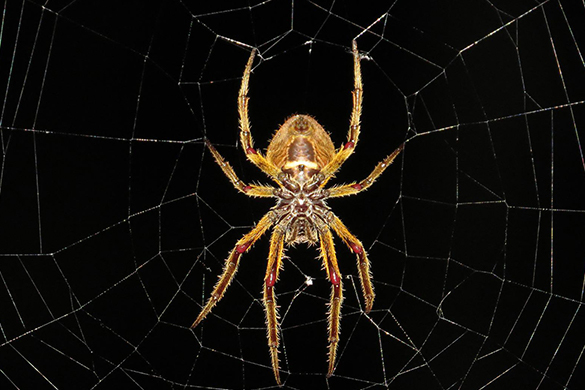
Spiders represent any of more than 46,700 species of arachnids that significantly differ from insects in having eight legs rather than six and in having their body segmented into only two parts rather than three.
Infestation – The primary reason that spiders invade our homes is in the search for food. If you inadvertently have insects thriving in your home, spiders will thrive too. If you want to control spider populations in your home, it’s crucial to pest infestations.
Danger – Black widows and brown recluse spiders, the most poisonous in the US, are the two predominant dangers of spider infestations. A bite from one of these arachnids can be deadly. These spiders are usually found in dark, secluded, and undisturbed areas of the home.
Control – Caulk all cracks and fissures in your home’s foundation. Seal windows with fitted screens and all doors with sweeps and new weather strips. Clean window shutters, rain gutters, leaf piles, garages, or utility sheds regularly, and power-wash any webs off your home.
Prevention – Besides keeping your shrubs and trees trimmed and eliminating clutter, you can plant lavender, mint, eucalyptus, and citronella plants that spiders don’t like. Adding these plants to your yard and garden can help deter spiders from building webs in and around your home. If you don’t want to grow these plants, you can use essential oils, like peppermint oil and tea tree oil.
2. Ticks (Ixodida)
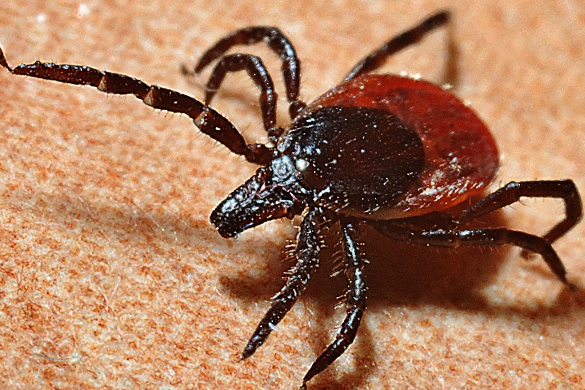
Ticks are tiny, wingless, bloodsucking arthropods. They will burrow their heads into their host and typically change drastically in shape, color, and size when they are engorged with the host’s blood. Ticks have extremely small mouths that will typically go completely unnoticed when they bite.
Infestation – The most common sign of a home tick infestation is the presence of ticks on family members’ and pets’ skin when they did not spend time outdoors. When your home is infested with this pest, you may often find them inside your vacuum cleaner bag or canister.
Danger – Ticks may be infected with bacteria, viruses, or parasites. Common tick-borne diseases include lyme disease, babesiosis, ehrlichiosis, anaplasmosis, Tick-Borne Relapsing Fever, and tularemia.
Control – For tick infestation removal, use a nontoxic pesticide like Wondercide Flea and Tick Spray. Spray this tick extermination product liberally along baseboards, window and door surrounds, furniture, edges of rugs, under cabinets, and on curtains to kill ticks.
Prevention – You can prevent a tick infestation by clearing tall grasses and brush and installing a 3-foot wide barrier of wood chips or gravel between lawns and wooded areas that restrict tick migration into developed areas.
3. Fruit Flies (Drosophila melanogaster)
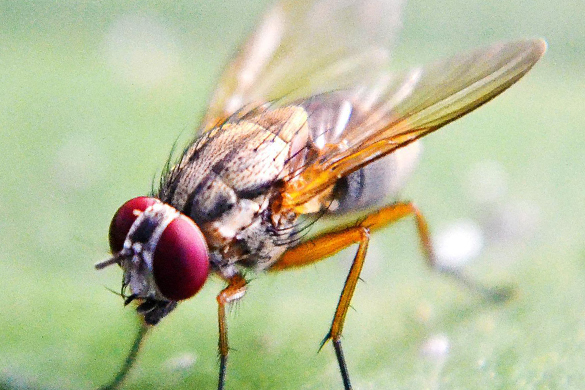
Fruit flies are a very small fly, with adults growing to a mere 1/8th of an inch in length. Their thorax is tannish in color, and their abdomen is black with a gray underbelly. However, in general, fruit flies tend to have a tan appearance. Fruit flies often have red eyes, although some species have dark-colored eyes.
Infestation – Fruit flies will often infest homes with ripe, rotting, or decayed fruit and produce. They are also attracted to fermented items like beer, liquor, and wine. Fruit flies may breed and develop in sink drains, garbage disposals, and trash cans.
Danger – Some of the bacteria fruit flies may carry include salmonella, E. coli, and listeria. These germs can each cause food poisoning, and severe cases may require hospitalization and can even be life-threatening.
Control – Remove any potential food source from your home, then pour boiling white vinegar or water into drains and other suspected nesting areas. This is a simple way to get rid of fruit flies immediately.
Prevention – To avoid a fruit fly infestation, store your fresh produce in air-tight containers or refrigerators and thoroughly inspect any fruits or vegetables brought into your home. Establish a regular schedule to clean drains, garbage disposals, and any location where food waste potentially accumulates.
4. Mosquitoes (Culicidae)

The slender, elongated body of an adult mosquito is covered with scales. Mosquitoes are also characterized by their long, fragile-looking legs and elongated, piercing mouthparts.
Infestation – There’s an increased possibility of mosquito activity and infestation if your property is near any standing water with a constant water source. Mosquitoes can easily enter your home and lay their eggs in even the smallest amount of standing and undisturbed water. House plants are a common attraction for mosquitoes inside your home.
Danger – Consequences of some mosquito bites can be the transmission of severe diseases and viruses like malaria, dengue fever virus, Zika, and West Nile virus, which can result in disabling and potentially deadly effects like encephalitis, meningitis, and microcephaly.
Control – You can use citronella torches or candles to keep mosquitoes away from outside areas. Fans can circulate air strong enough to disperse mosquitoes, while electrocuters, or mosquito zappers, utilize heat and carbon dioxide to attract and kill these pests.
Prevention – Since mosquitoes require water for two stages of their life cycle, it’s imperative to eliminate standing water sources. Get rid of any standing water in rain gutters, tires, buckets, water troughs, plastic covers, toys, plant water trays, or any other container where mosquitoes can breed.
5. Ants (Formicidae)
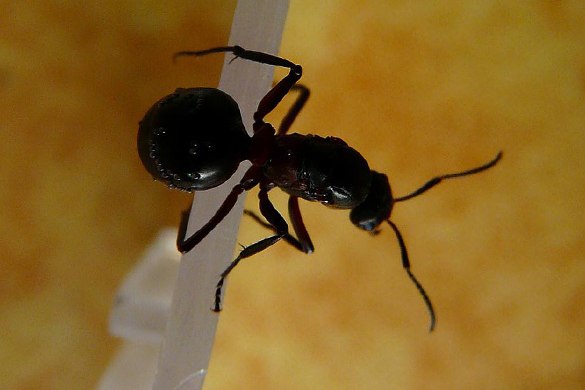
With bodies covered by an exoskeleton, most ants will be either red or black and can measure anywhere from 1/3-inch to 1/2-inch. Ants have six articulated legs, large heads with compound eyes, elbowed antennae, and extremely powerful jaws.
Infestation – Indoor spaces (like your home), especially the kitchen and pantry, offer sources of food, water, and climate-controlled shelter for them.
Danger – Ant bites can cause some mild pain and discomfort, but they aren’t usually dangerous. However, your skin can become irritated or even infected when not cleaned after a bite.
Control – The most effective control method for an ant infestation is using ant baits, removing any potential food or water source, and eliminating the pheromone trail left behind by any invading ants. Read more about eliminating an ant infestation at homeandgardeningguide.com/repairs/pest-control/5-ways-to-eliminate-ants-in-your-house/
Prevention – Prevent ants from entering your home by sealing up any cracks and holes in your walls. This will also prevent them from nesting inside wall insulation.
6. Cockroaches (Periplaneta americana)
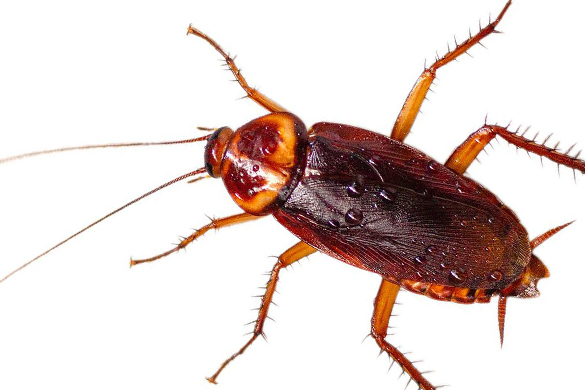
Cockroaches are characterized by a flattened oval body, long flexible thread-like antennae, and a seemingly polished black or brown leathery outer protective layer. The head is bent downward, and their mouthparts point backward.
Infestation – Roaches will invade your home in search of food, shelter, and water. They can use even the smallest of openings as an entryway into your home. They can come in through cracks in the exterior walls, dryer vents, crawlspaces, or the tiny gaps between walls and floors.
Danger – Cockroaches are dangerous and seen as an allergen source or asthma trigger. They can carry harmful illness-causing bacteria when left on food.
Control – Use glue traps, poisonous baits, and roach sprays like Raid, Black Flag, or Combat. Focus on thorough cleaning and vacuuming where traps catch roaches. Flush cockroaches out of voids and from behind appliances with a hair dryer and suck them up with a vacuum as they run out.
Prevention – Use baits and sprays that leave a protective barrier or residue behind. Peppermint oil, cedarwood oil, and cypress oil are extremely effective at keeping cockroaches away.
7. Termites (Isoptera)
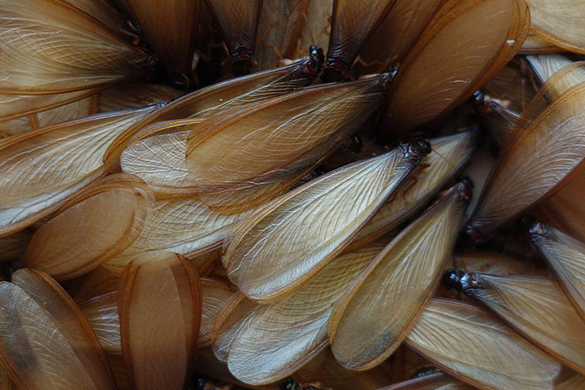
Termites have straight antennae and two sets of wings equal in length. Termites have two body segments with a straight abdomen. They voraciously consume cellulose obtained from wood, grass, leaves, and vegetative materials like paper, cardboard, and cotton.
Infestation – Homeowners might unwittingly bring termites inside in firewood or untreated lumber. In addition to wood inside the home, termites are drawn inside by moisture, wood in contact with house foundations, and even cracks in building exteriors.
Danger – Termites are not known to carry harmful diseases. However, people who are living in termite-infested homes may suffer from allergic reactions or even asthma attacks. Termites are also known to cause severe and costly structural damage to homes.
Control – One control method uses an oil-based termiticide to kill termites in 24 hours by attacking their nervous systems. This treatment is not recommended for indoor use but can be sprayed around the perimeter of your home to kill termites. For those already indoors, hire a reputable pest control service to help remove and kill your termite problem.
Prevention – Termite prevention is essential to protect your home’s structural integrity. Consider the following:
- Remove all dead wood and other debris from your yard and landscape
- Keep plants and vegetation away from your home
- Avoid using mulch near your property
- Keep your trees and shrubs pruned
- Eliminate any excess moisture on or around your property
- Keep any water features like birdbaths, ponds, or waterfalls clean
Termite infestations can cause your home’s market value to plummet. Prevention and immediate response are critical to preserving your greatest investment.
Home Insect Infestations
In this article, you discovered essential information and tips on the identification, control, and prevention of several prolific insect species infestations.
Knowing how to identify, control, and prevent insect infestations will help you safeguard your loved ones from infectious bacteria and illness.
Neglecting the need for immediate action against insect infestations can result in unsanitary living conditions and contaminated food, leading to severe illness and life-threatening medical conditions.
Sources:
entomology.ca.uky.edu/ef623
cdc.gov/mosquitoes/mosquito-bites/prevent-mosquito-bites.html
cornell.edu/whats-bugging-you/ticks/how-do-i-protect-myself-ticks/
agrilifeextension.tamu.edu/library/insects/indoor-flies-and-their-control/
ipm.ucanr.edu/PMG/PESTNOTES/pn7411.html
extension.msstate.edu/publications/control-cockroaches-and-around-your-home
epa.gov/safepestcontrol/termites-how-identify-and-control-them
Visit https://www.homeandgardeningguide.com/repairs/pest-control/ for more pest control articles, resources and how-to tips.